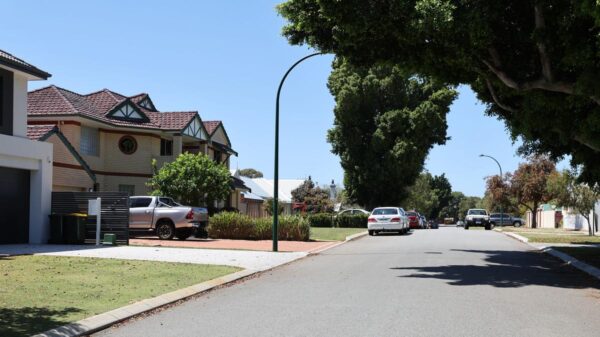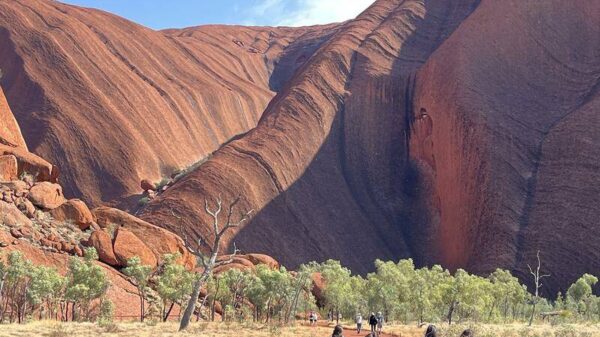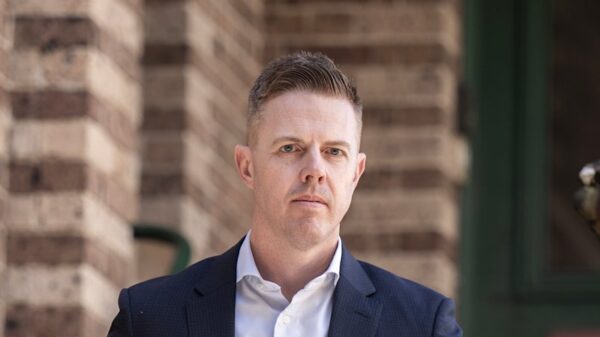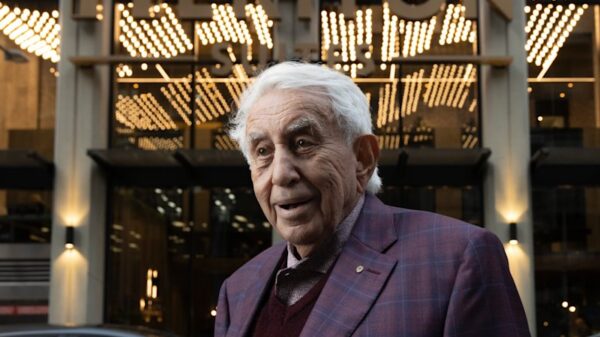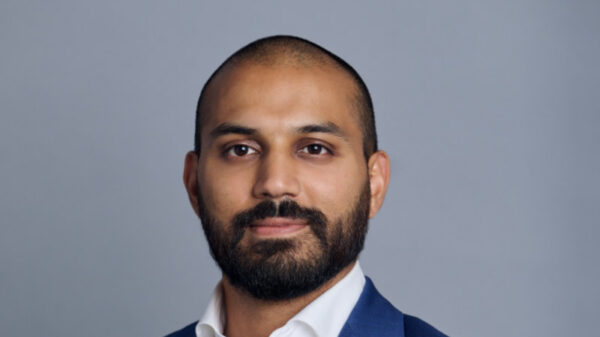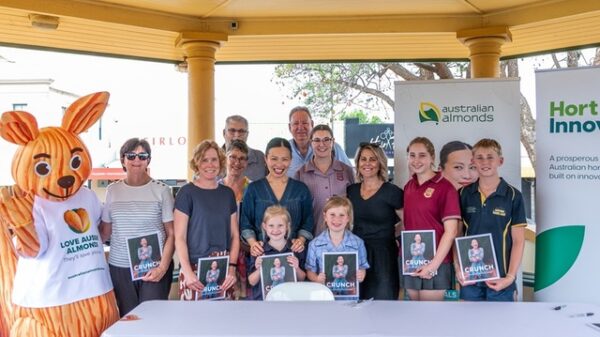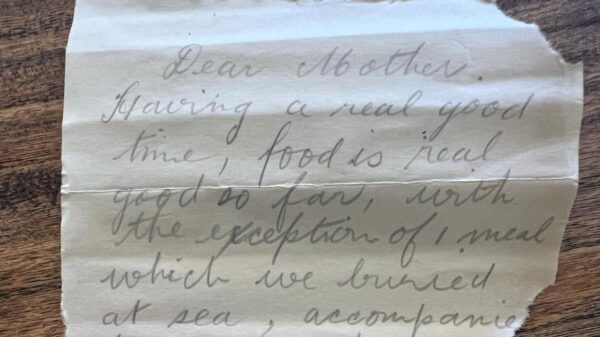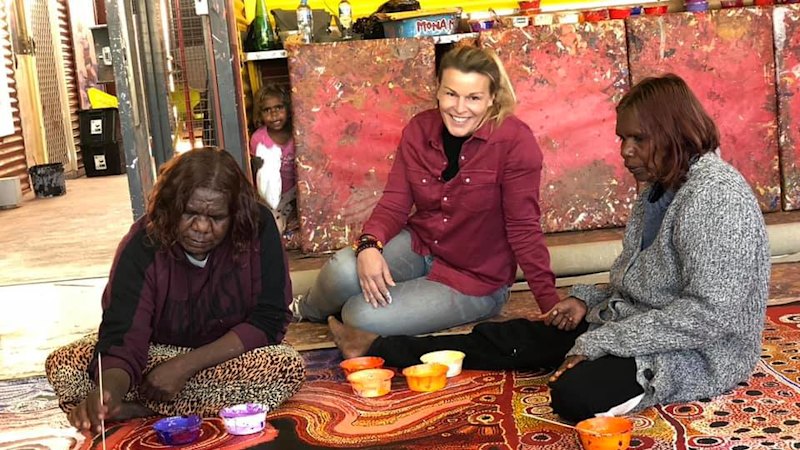A gallery in Lens, Switzerland, is reshaping the perception of contemporary Aboriginal art in Europe, thanks to the vision of collector Bérengère Primat. This cultural centre, located near a picturesque artificial lake in the Swiss Alps, has become a vital link between First Nations artists from Australia and audiences across Europe.
The Fondation Opale, which Primat established, offers a space for exhibitions and artist residencies, showcasing works from renowned figures such as Emily Kam Kngwarray, Clifford Possum, and Sally Gabori. Primat describes her journey into the world of Aboriginal art as an “obsession” that began two decades ago when she first encountered Indigenous Australian paintings in a Paris gallery.
“Walking into that space, I was captivated,” she recalls. “The works radiated a depth and energy that felt almost tangible, like stepping into another way of seeing and understanding the world.” Under the guidance of curator Arnaud Serval, Primat immersed herself in Aboriginal culture, spending significant time in locations such as Alice Springs, the Kimberley, and Arnhem Land. Over the years, she returned with paintings, aiming to honour the stories of the artists rather than simply collect for profit.
Primat’s family background is noteworthy; she is the great-granddaughter of Marcel Schlumberger, co-founder of the global oil services firm Schlumberger, and the grandniece of Dominique de Ménil, a prominent art collector. By 2017, Primat had amassed over 1,600 works, a number that has now grown to around 2,000.
Her purpose became clearer after a pivotal visit to the APY Lands in South Australia with her children, where an artist expressed concern about the lack of venues in Europe for Aboriginal art. This motivated Primat to take action. After learning of financial troubles at the Pierre Arnaud Foundation, where she had previously loaned works, she decided to establish the Fondation Opale.
The institution is primarily funded by Primat herself, but also receives support from various donors. Its mission is to present Aboriginal art as a living, evolving contemporary practice, rather than relegating it to ethnographic confines.
“What we do is contemporary art,” Primat asserts. “It’s not like ancient art, even though it has deep roots in ancient culture and values.” The foundation serves as a platform for Aboriginal artists to express themselves freely, fostering an environment where their voices can resonate.
Exhibitions at the Fondation Opale are carefully curated, exploring themes such as the influence of First Nations artists on global figures like Yves Klein. The current exhibition, Beneath the Reflections of the World, features the late Sally Gabori alongside American artist Forrest Bess, emphasizing cross-cultural dialogues. Primat believes that such exchanges help dismantle artificial boundaries in the art world.
With the guidance of Georges Petitjean, a respected figure in Indigenous Australian art, the foundation has gained institutional credibility. Petitjean, who started as a director at the now-defunct AAMU Museum of Contemporary Aboriginal Art, serves as the curator for Fondation Opale. He recognizes Primat’s collection as one of the most significant in the world.
Despite her impressive achievements, Primat remains modest. “I never started the collection for accolades,” she explains. Her focus is on the reception of the works and the impact they have on both the artists and the audiences. A notable comment from an Aboriginal woman encapsulated this sentiment: “When I see what you have done here and how it is presented, I feel even prouder.”
Primat acknowledges that her involvement has made a tangible difference in the lives of the artists. “If they sell their art, it makes life a little bit easier for them,” she states, reflecting on the relationships built through mutual respect and understanding.
Her children have also embraced the passion for Indigenous Australian art, growing up surrounded by the vibrant stories and canvases. Primat’s family now shares a commitment to promoting this art form, creating a legacy of appreciation and support.
Chief Executive of the APY Art Centre Collective, Skye O’Meara, highlights Primat’s long-term impact on Indigenous artists and the broader industry. “She committed to building her collection in a way that prioritised artists’ care, support, and best remuneration,” O’Meara explains. She adds that Primat’s approach stands out in an increasingly conservative art market that often overlooks living artists.
As global institutions increasingly recognize the value of Indigenous Australian art, Primat feels a sense of pride in the growing interest from collectors and galleries. The current exhibition, Beneath the Reflections of the World, will run until November 16, 2023, showcasing the vibrant and evolving narrative of Aboriginal art on an international stage.

